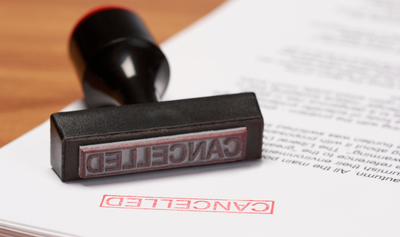Wage and Welfare Bond Claims Guide
Estimated Read Time: 4 minutes04-14-2022

A contractor or business owner who hires members of a union may need to hold a Wage and Welfare Bond (Union Bond) as part of the agreement/contract with the Union (typically called the Collective Bargaining Agreement). Unions often enforce a surety bond requirement as a way to guarantee the payment of wages, fringe benefits, and other obligations (such as union dues) specified in the Agreement.
As the surety company providing the bond, Jet grants dual protection by (1) honoring the bond obligation by fulfilling unpaid wages or benefit contributions while (2) still protecting bonded employers from false claim allegations.
How to Prevent Wage and Welfare Bond Claims
Although there are unions for all kinds of trades, the general purpose of a union is the same: to protect the rights and livelihoods of its members. The Wage and Welfare Bond strengthens that goal by ensuring that union members will receive due payment for their work from their employers, whether that’s in the form of wages or contributions to pension, vacation, or trust funds.
If you’re looking for a simple way to prevent claims, just make sure you are paying your laborers and contributing to any fringe benefits due according to the Collective Bargaining Agreement. Failing to do so will result in claims on the Wage and Welfare Bond.
Claim Details for Wage and Welfare Bonds
Who Files a Claim?
Since the Wage and Welfare Bond is a requirement set by unions to protect their workers, the union will be looking out for their members and will file a claim for any failure on the employer’s part to make payment. Wages, contributions to fringe benefit plans, or even union dues may be included in the bond’s coverage to ensure that the rights and welfare of the union members are secure.
When Can Action Against the Wage and Welfare Bond Commence?
Typically, a claim may be filed against the employer at any time during the bond’s term, but any distinction can be found on the bond form or in the Collective Bargaining Agreement. Sometimes, a union (as the obligee) will allow claim filings to be submitted for a brief period of time after the bond has ended. If a claim is filed in such a way, the cause of the claim must have occurred during the time the bond was active.
Is There a Cap on the Amount of a Bond Claim?
The amount of a bond claim must be within the Union Bond’s limit. It is very common for these bonds to have a custom bond limit, in an amount that the union has determined will be adequate in protecting their members. If a specific bond amount is needed or if there is a way to calculate the limit, it will typically be stated in the Collective Bargaining Agreement or contract.
Claim Process
Since the purpose of the Wage and Welfare Bond is to prevent missing wages or benefit contributions, any time the union finds that the employer has failed to comply, they would immediately take action on the surety bond. It’s not uncommon for the union to demand quick payment from the surety bond—sometimes it happens as quick as within 10 days of the demand of payment (such as the Teamsters Local Union 631 in Nevada).
If a claim on your bond is filed, Jet will review the evidence to make sure it’s not a false allegation against you. If you have any proof of payment that can be used as evidence in your defense, now would be a good time to submit it. But, if the claim holds up, Jet will have to pay out the claim according to the bond’s terms. And, as is the nature of a surety bond, you will need to pay Jet back.
We’ll use an example of a contractor hiring some electrical laborers who are part of a local chapter of the International Brotherhood of Electrical Workers:
Before beginning work, the contractor (we’ll call him Anthony) gets a Union Bond according to the security requirements of the Collective Bargaining Agreement.
Once work gets going, the union workers notice that they haven’t received a paycheck. When they brought it up to Anthony’s attention, he brushed it off. The laborers notify the union of the missing wages, and the union takes over.
The union files a claim on the Wage and Welfare Bond and demands payment of due wages from the surety bond. When Jet is notified of the claim, our team will look at the evidence that’s presented, like the employees’ lack of payment. If Anthony can provide proof of payment (via pay stubs), that would work in his defense, proving that he did, in fact, pay his employees.
However, if Anthony cannot provide proof of payment or fulfill payment to resolve the claim, Jet will be obligated to pay the workers’ wages on his behalf. This is part of the obligation of the bond, and conversely, Anthony must pay Jet back in the amount of the claim.
What Trades Might Be Covered Under a Wage and Welfare Bond?
Although this is not an extensive list, the following trades may include unionized workers:
- Millwrights
- Painters
- Sheet metal workers
- Teamsters
- Bricklayers
- Electrical workers
- Carpenters
- Iron workers
- Plumbers
- Sprinkler fitters
- Air, rail, and transportation workers
- Pipefitters
- HVAC workers


